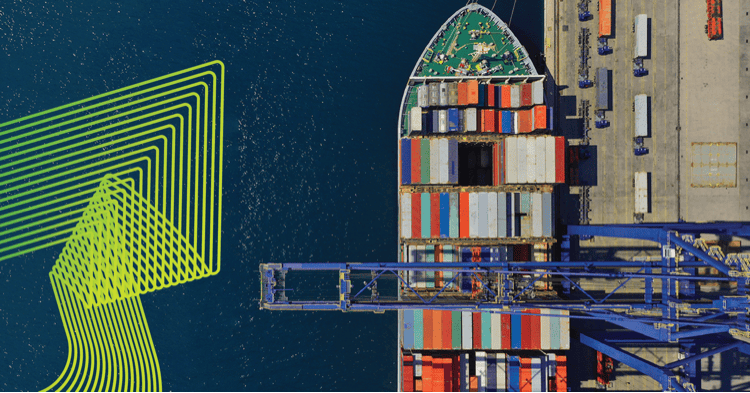Running a business is more complicated than it used to be for many reasons. Geopolitical shifts, economic instability, and technology disruption each play a significant role in the increasing complexity and uncertainty that organizations face today. Traditional risk management strategies and techniques are no longer sufficient. After all, the processes that worked in a world before social media and pre-global business connectivity simply fail to keep up with the demands and constantly changing business world we now live in. Strategic foresight is essential. When teams adopt effective strategic risk management they are able to help keep their people, assets, operations, and reputations out of harm’s way.
What Is Strategic Risk?
Strategic risk is different from other common risk categories and requires its own planning. Common risk categories include things such as cybersecurity, operational risk, supply chain disruptions, financial risk, and market fluctuations. Strategic risk on the other hand is any event or condition that could significantly hinder an organization’s long-term objectives, including both strategic objectives and broader business objectives. These types of business risks may include massive changes like leadership shifts, new product introductions, the introduction of a new competitor, mergers and acquisitions, and reputational risk.
To further illustrate the importance of strategic risk, let’s consider four of its most defining characteristics.
- Strategic Risk is High Impact, Low Frequency: This means that while strategic risks may be rare, they are likely to have a potentially catastrophic impact.
- Strategic Risk has Long-Term Consequences: A common risk like a supply chain disruption may cause issues temporarily, but once a backup plan has been established, business continues. This is not the case with strategic risk. When strategic risk is realized, the effects can span years, not just days or weeks.
- Strategic Risk Encompasses a Broader Scope: Strategic risks affect the entire organization, not just one department. This makes strategic risk even more dangerous.
- Strategic Risk is Often Tied to Other Risks: Strategic risks are often linked to other risks, creating both strategic and operational risk connections. They are wide-reaching, not just long-lasting.
Strategic Risk Examples
1. Geopolitical Conflict and Instability
An unexpected armed conflict or political upheaval in a key region disrupts supply chains, halts market expansion plans, and endangers employees. This impacts both strategic and operational risk at once.
2. Regulatory and Policy Shifts
Sudden sanctions, new data protection laws, or trade restrictions force organizations to rapidly alter operations. For example, changes in cross-border regulations may limit access to critical suppliers or markets, introducing regulatory risk with long-term consequences.
3. Reputational Damage from External Events
Organizations operating in politically sensitive regions may be associated with government actions or human rights issues. Even without direct involvement, the reputational fallout can erode customer trust and investor confidence globally.
4. Supply Chain Disruptions
Global events such as pandemics, port closures, or environmental disasters create long-lasting effects on supply availability, production timelines, and market competitiveness. This type of disruption can derail strategic objectives for years.
The Impact of Unmanaged Strategic Risk: Why It Matters Most
While risk is almost always problematic, strategic risk can create significant problems for an organization that go well beyond challenging and enter truly destructive. Due to their massive impact, strategic risks can be the reason an organization declines or fails. This is why it is critical that security teams identify the most likely strategic risks and plan accordingly. Ignoring these potential risks will leave an organization much too vulnerable to possible demise. This result may be financial ruin, or if finances remain intact, there are other significant intangible costs that can lead to long-term suffering.
Mitigating strategic risk can be daunting as these risks are scary to consider. However, fear of accessing the possibilities can hold back progress and ultimately do more harm than good.
Identifying and Assessing Strategic Risk: A Proactive Approach
At this point, the issue with strategic risks should be clear. Addressing and proactively planning for this type of risk is paramount. One of the most effective ways to do this is to leverage data-driven insights. Why? Data is incredibly valuable and will illuminate issues that may have been overlooked. Data will bring previously undetected patterns and trends to the surface. And more than that, data validates what is perceived and makes it clear what is happening or what is most likely to happen.
There are a few key steps in obtaining the best data-driven insights as part of the strategic risk assessment process.
Step 1: Environmental Scanning: This is when teams monitor external and internal factors, often done via a PESTLE (Political, Economic, Social, Technological, Legal, and Environmental) analysis. This step includes the team gathering and analyzing information outside of the organization’s control, which may include things such as economic conditions, social activities, and other external events.
Step 2: Scenario Planning: During this step, teams imagine future possibilities and their impact. By proactively viewing worst-case scenarios, teams can create the response plans these conditions call for. While it may feel dismal, it is the only way to prepare for these scenarios, and ultimately arms leaders with the knowledge they need if facing a strategic risk.
Step 3: Stakeholder Consultation: Currently, the gathering of insights from internal and external experts occurs. This knowledge is often crucial in amending and finalizing risk management plans, as these experts offer real-world experiences that provide valuable context and nuance. Consulting with senior management is especially important during this stage.
Step 4: SWOT Analysis: A classic tool in many strategic planning processes, the SWOT analysis empowers teams to identify strengths, weaknesses, threats, and opportunities that could evolve into examples of strategic risk.
Armed with data culled during the activities above, teams can assess the risk probability and severity of their organization’s strategic risks. This process strengthens risk identification and ensures vulnerabilities are not overlooked.
What this data may not reveal is the elusive “black swan” event. By nature, a black swan event is something that has never occurred, or hasn’t occurred in recent history. Assessing a novel or black swan event is a challenge, but organizations can work to mitigate the impacts of such catastrophes by developing backup plans, building flexible supply chains, ensuring that leaders and security teams have open mindsets and can be ready to adopt new processes without warning should the situation call for such a shift.
Managing Strategic Risk: From Reactive to Resilient
Traditional risk management plans were very reactive in their perspective. However, with the proliferation of data, which offers such a wealth of insight, previously unavailable pattern detection, and real-time intelligence, the security industry is experiencing a radical shift to proactive planning. This paradigm shift from avoidance to anticipation is changing the way leaders plan for strategic risks.
To create a strategic risk management plan and overall strategic risk management process that support a proactive paradigm, a security team will want to focus on the following:
- Risk Mitigation: When a team takes on risk mitigation, they commit to creating plans that will help an organization weather any storm and create options on how to best overcome a disaster instead of letting it derail the business entirely. During this time the team will develop plans to reduce risks, which may include diversification of vendors, the identification of worst-case scenarios and contingency planning according to those criteria, testing models and systems to see if they would work during worst case scenarios, and so on. These mitigation strategies are also referred to as risk mitigation strategies that build resilience into the organization.
- Risk Transfer: At this point teams will work to insure against specific risks where possible through means such as insurance or contractual agreements. Risk transfer may be a more cost-effective way for an organization to manage a risk and can be the best move for the organization’s wellbeing. This often applies to areas such as regulatory risk.
- Risk Acceptance: Preparing for unavoidable risks is an important step for all leaders to take. During this phase, leaders need to determine if accepting a risk is more beneficial to the organization versus investing in the mitigation of that risk. This is a strategic decision and should be done with the aid of data-driven insight. It is also advised that risks that are deemed acceptable be reviewed, as conditions may change and what was once acceptable may not stand true at a future time.
- Risk Exploitation: This step is when an organization recognizes that certain risks can present growth opportunities. Going further, teams proactively and intentionally work to ensure this advantageous risk occurs for the organization to realize that opportunity.
- Continuous Monitoring and Review: Strategic risks are dynamic and need ongoing assessment. This is a mindset that successful security teams and leaders know well. Due to ever-shifting conditions, there is no static environment, and organizations must be diligent in their commitment to monitoring and reviewing all aspects of their risk management processes.
Seerist: Your Augmented Analytics Partner in Enterprise Risk Management
In order to ensure an organization is maximizing data-driven insight, they need to be leveraging tools to help identify, sort, and synthesize this information, as manual monitoring and analysis is simply not enough. The challenge of data overload and complexity is a real issue, and traditional methods fail to keep up with the large data volumes circulating in today’s digital environment. There are many tools and platforms available to assist and augment the efforts conducted by an organization’s security team. Seerist, a risk intelligence platform bringing clarity and speed using innovative technologies, including Artificial Intelligence (AI), Machine Learning (ML), and Natural Language Processing (NLP) combined with expert human insights, is one such option.
In today’s ever changing geopolitical world, where news, content, and information is created and shared around the clock, technologies like AI, ML, and NLP are not just nice-to-haves, they are a must. Modern day risk management requires teams to have real-time information at their fingertips to identify the most pressing strategic risks, as well as risks of all types, and to do that, they need the aid of innovative tools.
These innovations make up the Seerist platform; but that’s not all that Seerist offers. They also add the unique layer of human intelligence. A summary of the benefits that Seerist brings to the table include:
- AI and ML for Early Warning: Moving faster than any team of analysts is capable of, these technologies analyze millions of data points in mere minutes to detect emerging threats.
- Human Intelligence for Context and Nuance: Seerist doesn’t rely on technology alone. There are teams of expert analysts based around the globe who add strategic foresight and analysis to AI insights.
- Predictive Capabilities: Often overlooked and underrated is the power of historical data. Organizations can learn a lot from analyzing what has happened in the past and using that intel to help anticipate future events.
- Actionable Intelligence: Leveraging the power of technology coupled with expert insights, users can receive timely, relevant information for strategic decisions.
- Real-World Applications: Seerist has assisted countless organizations prepare for geopolitical shifts, supply chain disruptions, and more.
By combining these strengths, Seerist functions as more than just risk management software. It becomes a partner in helping organizations refine risk management strategies and stay ahead of both internal and external pressures.
Managing Strategic Risk is Mandatory to Achieve Long-Term Success
It is imperative for organizations to understand and manage strategic risk to achieve long-term success. Security teams have a new set of challenges when trying to manage strategic risk in today’s digital universe. The best way to stay ahead of strategic risks today is to collect as much data as possible and leverage that intelligence to make informed decisions. Reactive strategies and decision-making is not an effective business strategy.
Organizations that leverage technology and outside experts to stay informed, stay competitive, and stay ahead of issues will find success. For this reason, leaders must prioritize managing risks, aligning efforts with both internal and external factors, and using key risk indicators to anticipate threats before they materialize.
If your organization needs to improve its strategic risk management, consider reaching out to Seerist to learn more about that platform and how it can help leaders navigate the future with confidence.






